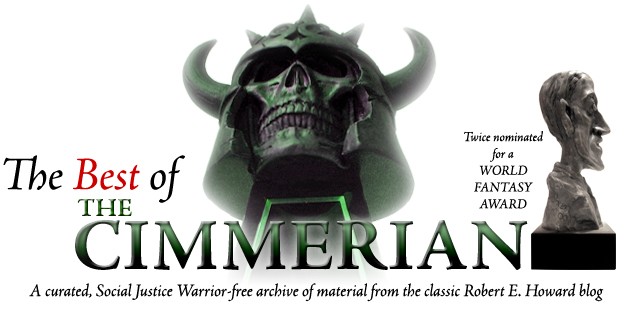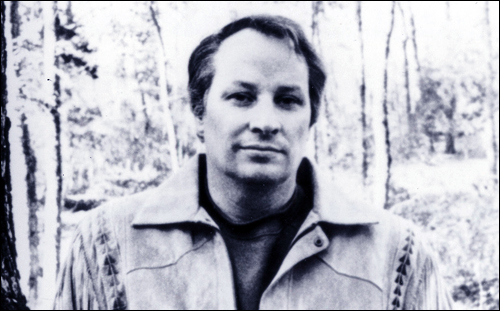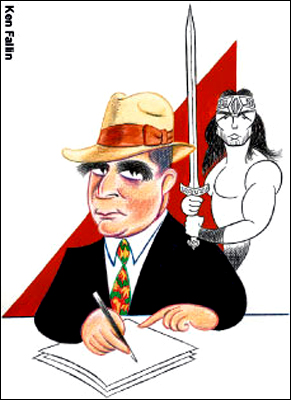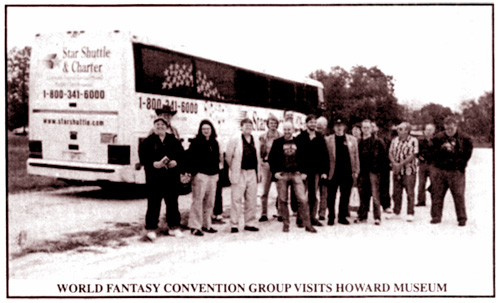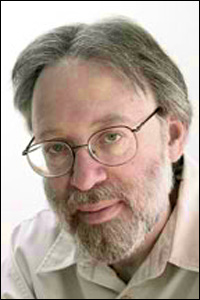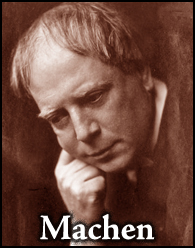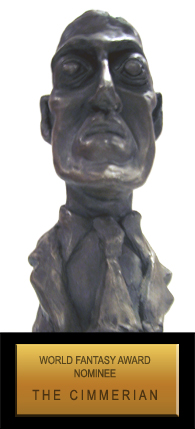
Thanksgiving! Baked turkey, with dressing made of biscuit and cornbread crumbs, sage, onions, eggs, celery salt and what not; hot biscuits and fresh butter yellow as gold; rich gravy; fruit cakes containing citron, candied pineapple and cherries, currents, raisins, dates, spices, pecans, almonds, walnuts; pea salad; pumpkin pie, apple pie, mince pie with pecans; rich creamy milk, chocolate, or tea — my Southern ancestors were quite correct in adopting the old New England holiday.
I hope you had as enjoyable a Thanksgiving this year as I did. I don’t know when I enjoyed a holiday more.
That’s Robert E. Howard, writing to H. P. Lovecraft in December of 1932. In some ways, he didn’t have much to be thankful for. The Depression had hit hard, several of his reliable markets had stopped publishing, and his life’s savings was lost when the Cross Plains banks failed. But he still had his friends, and the joys of football games and boxing matches, and the serene and comforting cornucopia of riches and memories that is a Thanksgiving dinner with loved ones.
For that 1932 holiday he told HPL that he spent the morning doing chores, then went with Lindsey Tyson to a football game in Brownwood between Howard Payne College and Southwestern University, fierce rivals who on that day were battling for the “championship of the Texas Conference.” Before the game he ate dinner at “the home of a friend” — Tevis Clyde Smith, perhaps? — and then
we helped him unload a bunch of steers, in order to facilitate an early arrival at the game. They were the finest, fattest, big Hereford critters I’ve seen in a longest time; and one of them was the meanest and wildest I ever saw. The three of us fought him all over the hill, and after we got him in the corral, we couldn’t get the ropes off. We had two ropes on him, or he’d have killed some of us. When he’d plunge at one of us, the other would haul him back, and so on. As it was both of us had some narrow shaves. We finally got one lasso off his horns, but to save our necks, we couldn’t get the other off. We had him hauled against the corral fence, and every time we slacked the rope, he took every inch of it, and tried to murder us. At last I threw a doubled lariat around his huge neck and snubbed his head down against the fence, and held him there while the rope was cast off his horns. Then it was every man for himself!
After that adventure, Howard “picked up another friend and repairing to the stadium, witnessed one of the fiercest, closest and hardest-fought games I have ever seen.” He describes the game to Lovecraft in detailed and poetic terms that still roil the blood seventy years later. “Primitive ferocity…heaving among the helmets…charging at blinding speed…driving with all the power of his iron legs…struck the line like a thunderbolt…devastating stiff-arm…terrific punishment…sheer power…desperate plunges…” As the game neared its end, Howard’s keen eye caught a scene of the sort that his stories reek of, the kind of scene that summed up Life itself to the Texan in all of its tragic majesty and red ruin:
Always the big fullback was in the midst of the battle, fighting with every ounce of his iron frame and ferocious spirit. Then toward the last of the game, something happened. I don’t know what it was. I was watching the ball, when a yell went up, and we saw the big Indian down. His leg was hurt. They carried him off the field and laid him on the sidelines, where they began working over his injury. A big German lad was sent in in his place. He was good, but he was not Hoot Masur. Southwestern began an implacable drive. They marched irresistibly down the field, fighting for every inch. At last, on the sidelines, the injured player rose, with the aid of his companions. He began to limp up and down the lines, leaning heavily on a team-mate. Doggedly he plodded, half-dragging his injured member, his heavy jaw set stoically. Out on the field his team-mates, crippled by his loss, were being pushed slowly back toward their own goal. The fullback let go of his supporter, and walked alone, limping deeply, moving slowly. From time to time he worked at the injured leg, stooping, flexing, trying to bend his knee. Then he would resume his endless plodding. I forgot to watch the game in the fascination of watching that grim pathetic figure toiling along the sidelines — up and down — up and down. The sun was sinking, and the long shadow of the grandstands fell across the field. In that shadow the fullback plodded. Once, somewhere, I saw an old German print or woodcutting, depicting a woodcutter in a peaked hood carrying a bundle of sticks through the Black Forest. I was irresistibly reminded of this print. The peaked hood was there, even, the peaked hood of a grey sweater-like garment worn by football players when not in the game. There were the same massive shoulders, made abnormally broad by the bulge of the shoulder-pads beneath the sweater; the same slouching, forward bending pace. The shadows of the forest were to an extent repeated in the shadows of the grandstand. Only the bundle of sticks was missing, but the figure etched in the shadow stooped and toiled as if it bore the weight of a world on its shoulders. There was tragedy in the sight; he was eating his heart out because he was not back in the game, stopping those merciless onsets, giving freely of his thews and heart and blood, eating up punishment that would have snapped the bones of a lesser man. There was nothing of the story-book sob-stuff about the business. But to me, at least, there was a savage pathos in the sight of that grim, mighty figure plodding up and down the lines, striving vainly to work his bitterly injured leg back into shape, so he could re-enter the game. At last, when his captainless team was making its last stand, with its back to the wall, he sank down on the naked ground and covered his eyes with his hands. He would not watch the defeat of his mates. But that defeat did not come. Fighting like madmen, they broke up the attack just half a foot from the goal-line. The final score: Howard Payne 6, Southwestern 0. The fullback’s touchdown in the first quarter was the only score. As the grandstands emptied and people rushed down onto the field to congratulate the winners, I saw him limping slowly through the throng, toward his teammates.
Drama? You will see it on the football field, raw and real and naked, unaided by footlights, stage settings, or orchestras.
After the game it was time to repair to a local restaurant for a second gargantuan meal, a repast of “roast turkey and oyster dressing and ice cream” gorged while watching “the shirt-tail parade and the other antics of the celebrating collegians.” In 1932 Howard was but twenty-six, still only a few years removed from his time at Howard Payne and from his wayward youth. He was young, and he was with friends, and he had both watched and participated in a day chock full of hard work and brutal masculine struggle against nature and implacable foes. He had fought and he had feasted, in much the same way his new hero Conan was about to begin doing in the pages of Weird Tales for the very first time a scant few weeks later.
Howard finished the most enjoyable holiday in his memory by driving home with Lindsey “through the forty miles of hill country, through one of those still, clear, crisp star-filled nights that you enjoy only during good football weather. Simple and unsophisticated enjoyment, yet somehow I got more kick out of the whole affair than I’ve gotten out of more expensive and less innocent pleasures. We didn’t even take a drink of liquor.” After all, what use is liquor on a day punch-drunk with the mead of Life? On that Thanksgiving Howard had received a stirring confirmation of the way he viewed the world, a 50-yard-line view of the best and worst that existence had to offer. In his description of that day we see the writer’s mind at work, simmering with the dreams and thoughts that fueled his fiction.
Later in that same letter to Lovecraft Howard proclaims: “By God, I demand freedom for myself. And if I can’t have it, I’d rather be dead.” Over the next four years he would make good on this promise as his certainties about Life began to unravel and spiral into the abyss. But on Thanksgiving of 1932 the spirit of Robert E. Howard was free, and shone with a brilliance that melted away both the shadows of the Great Depression and the dark mantle of the depression that was all his own.
In the end, Life isn’t about freedom from struggle or tragedy or despair, it’s about what you do in the face of it. Whether it’s a dwindling group of battered pilgrims giving thanks to God, or a battered Indian fullback holding his head in his hands as his team wins, or a battered writer seeing in everything around him the seeds of his life’s work, drunk with the sheer humanity of it all. We all undergo great hardships in this world, but occasionally a day or a moment appears like an oasis, reminding us of all that is good and free. More than any other day, Thanksgiving conjures such feelings within us. We can read Howard’s thoughts seventy-four years later and share in his exultation, in the process reminding ourselves of the good in our own lives. Family, friends, passions, luck. Different draughts for each of us, but all drawn from the same sweet well.
Happy Thanksgiving.
